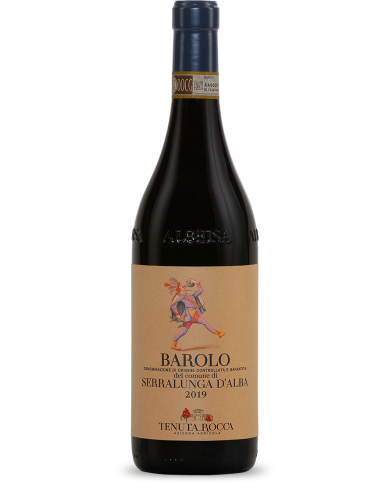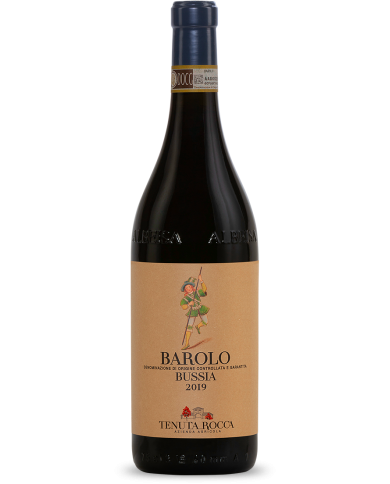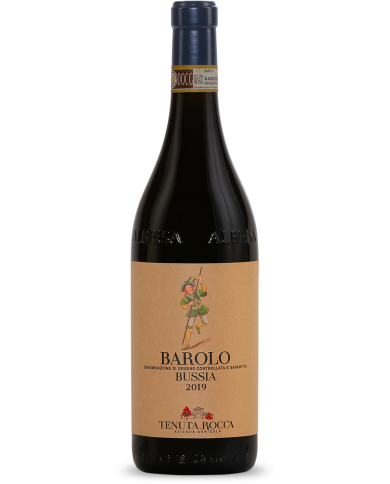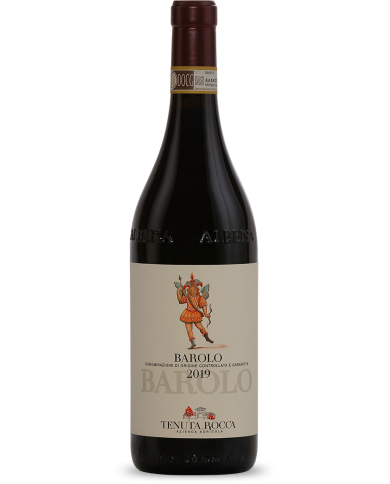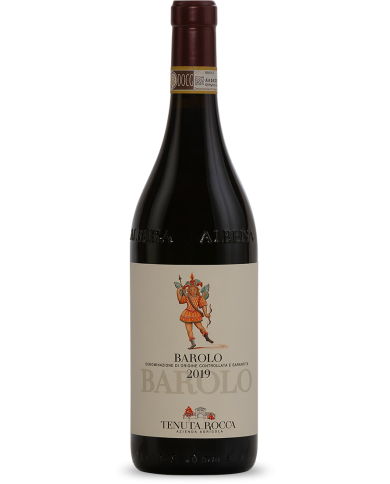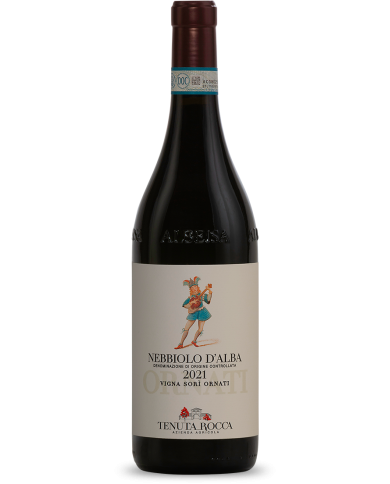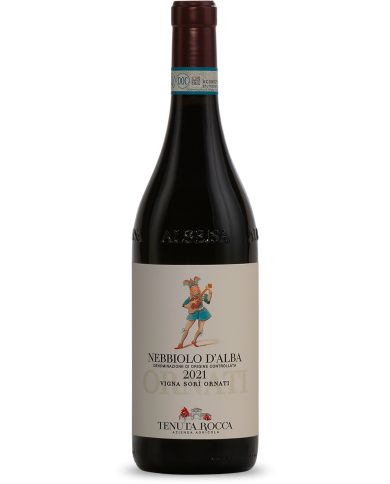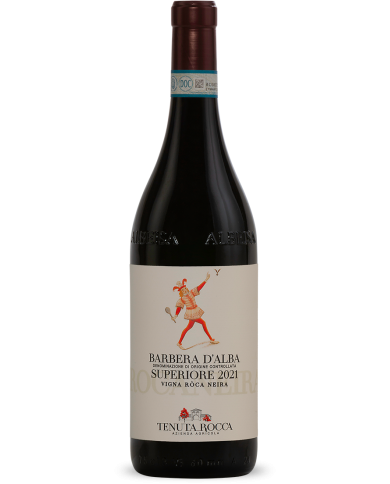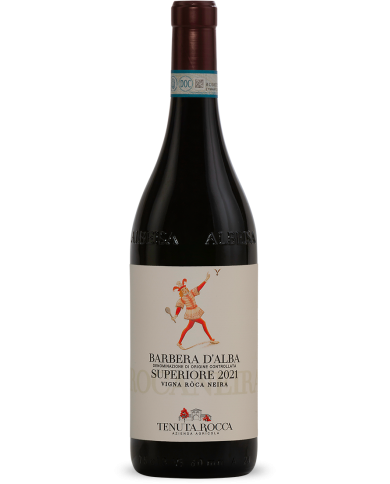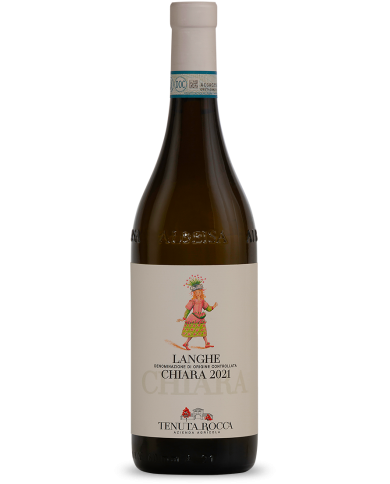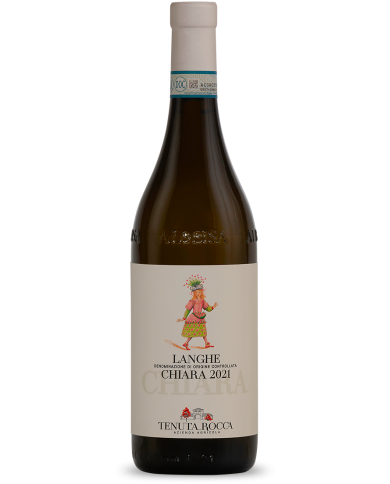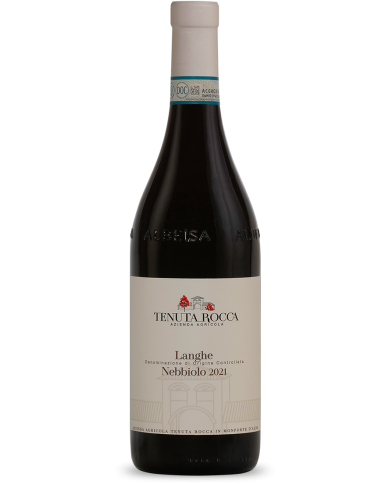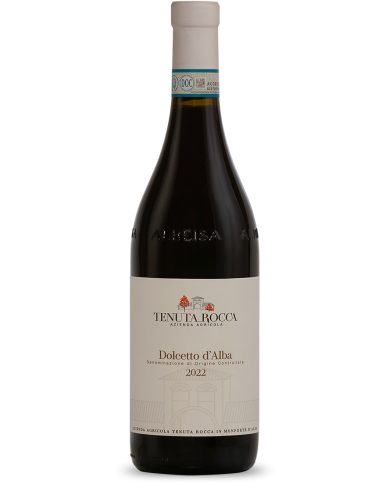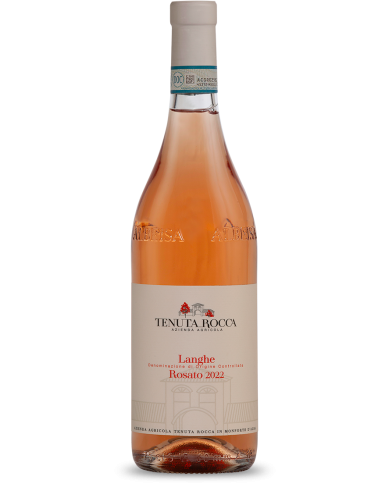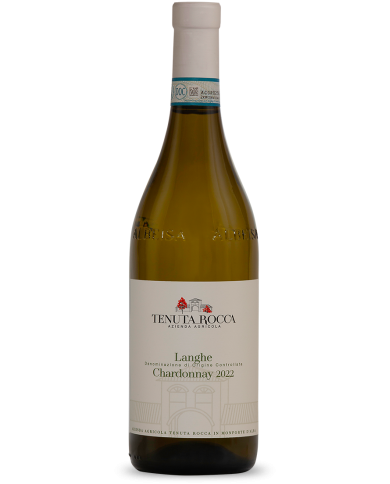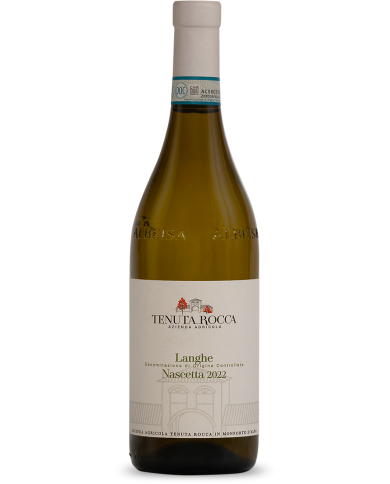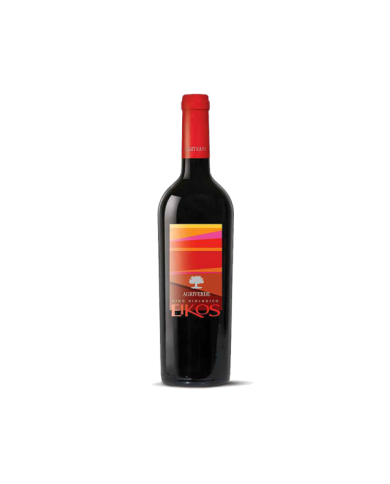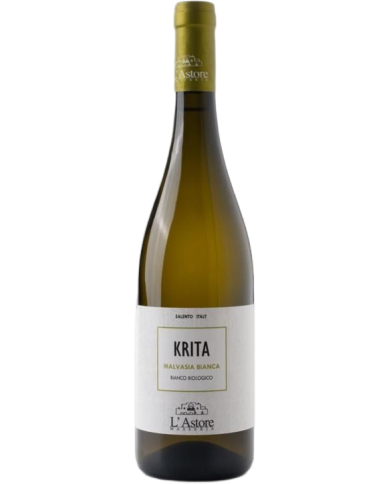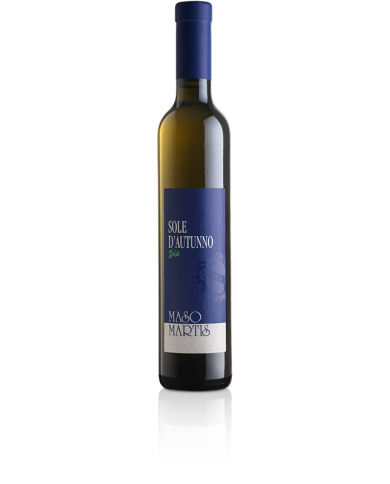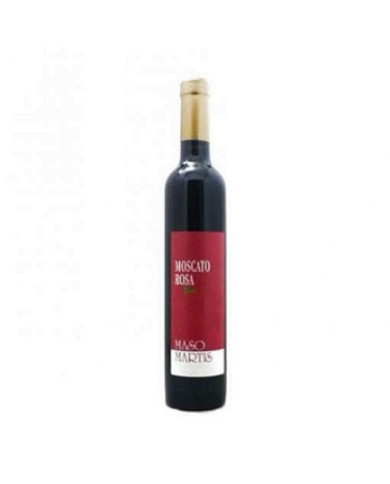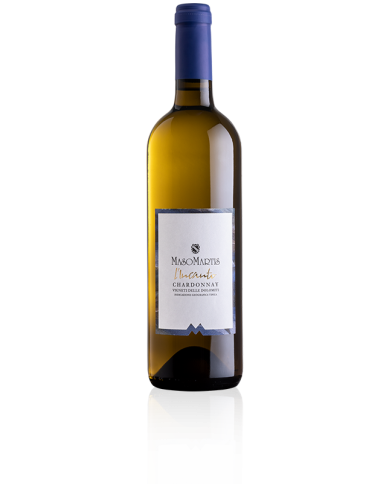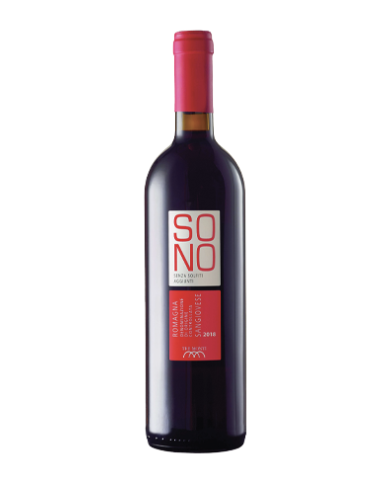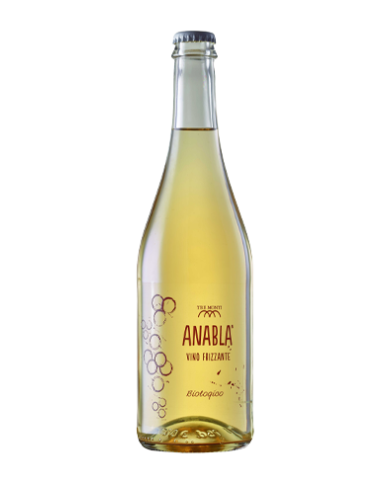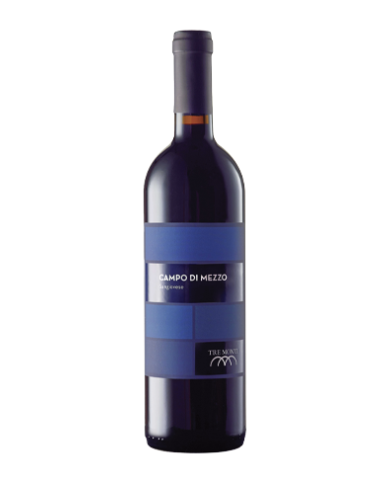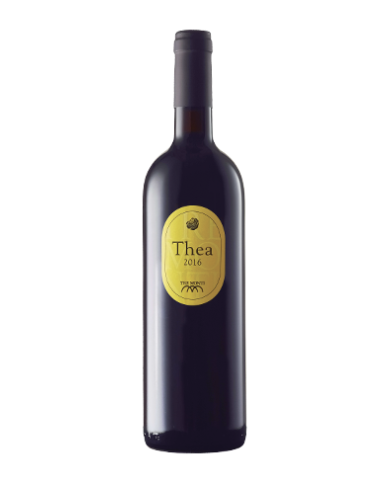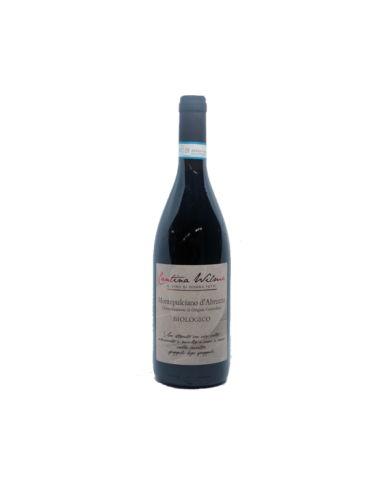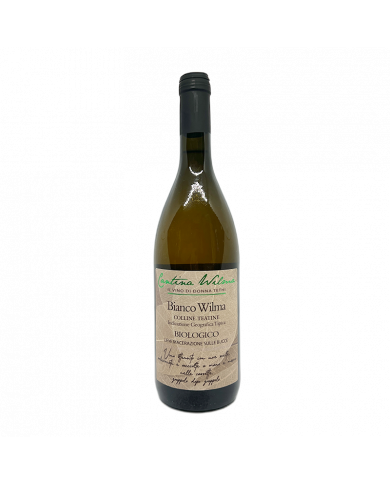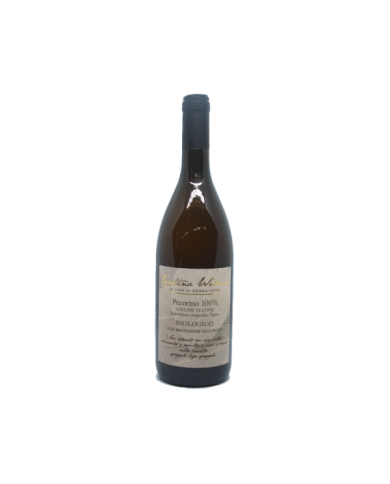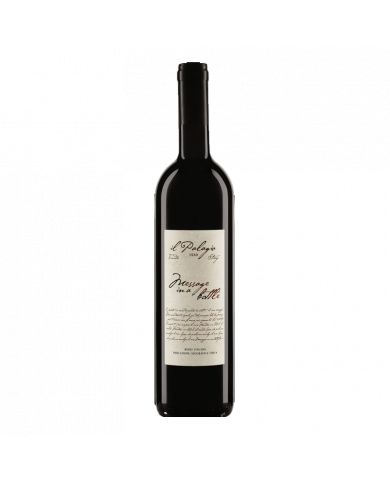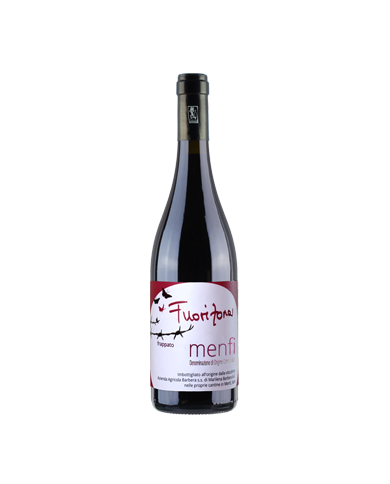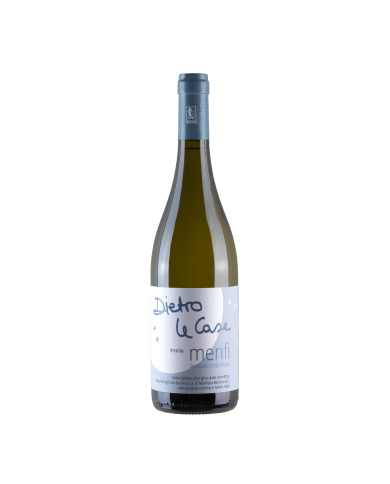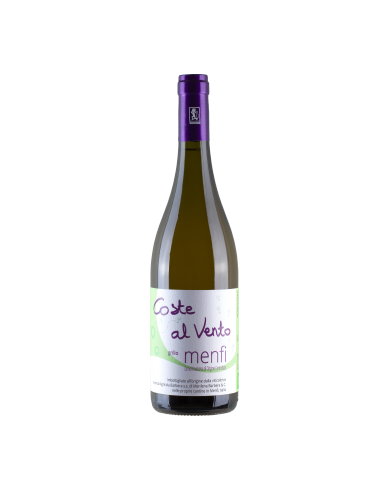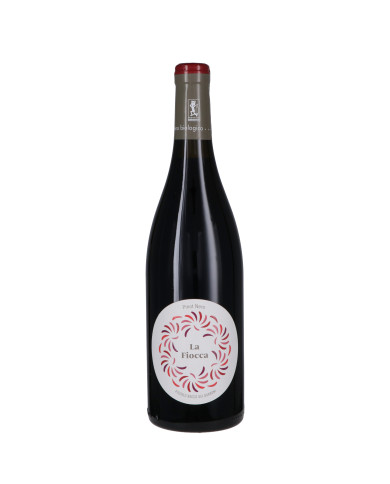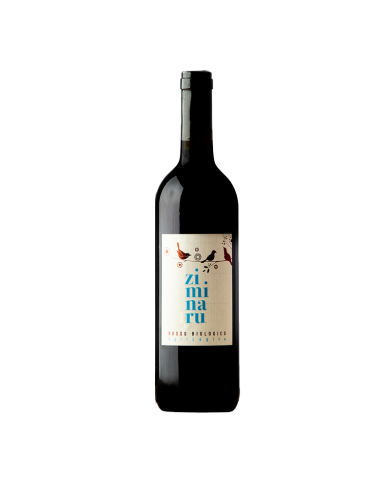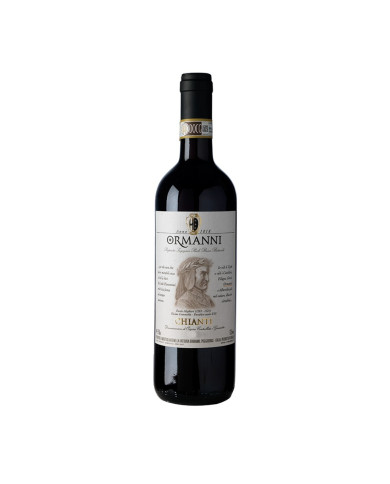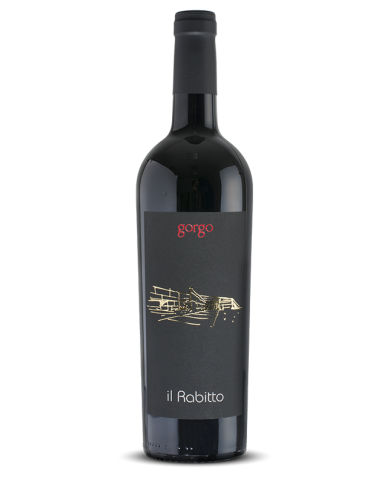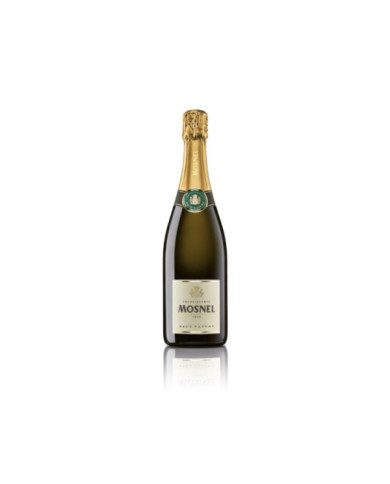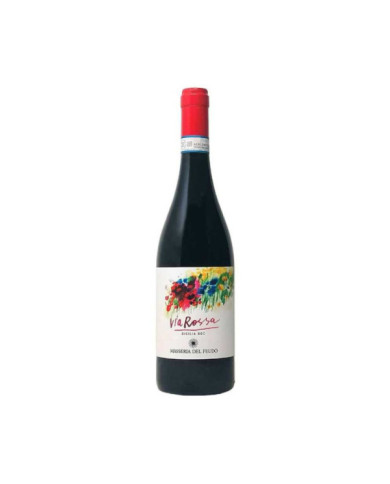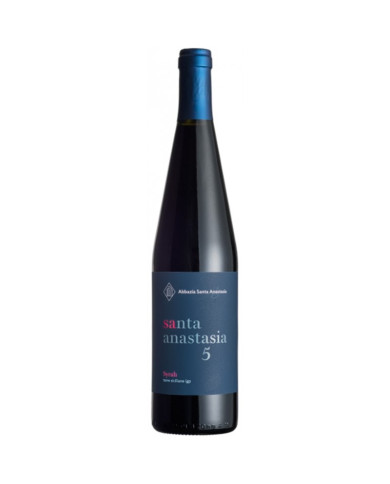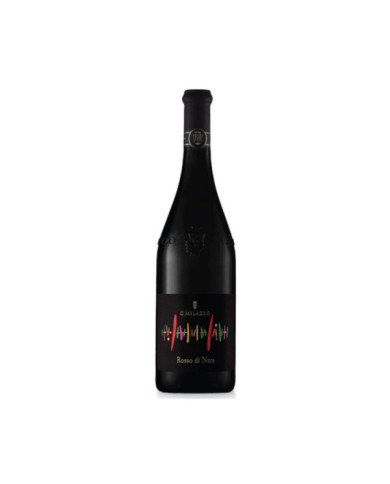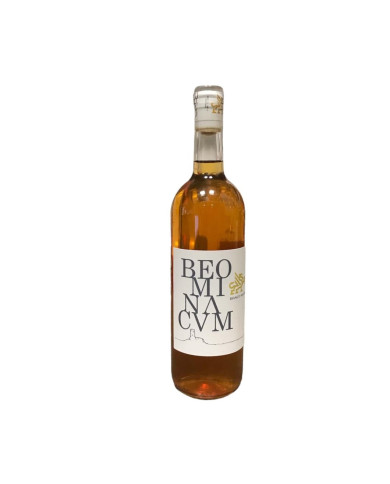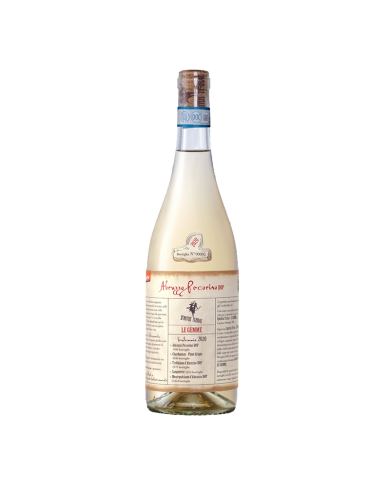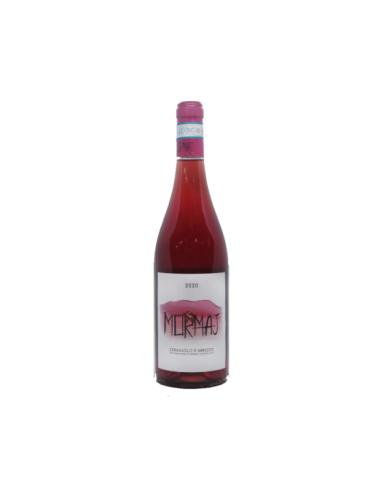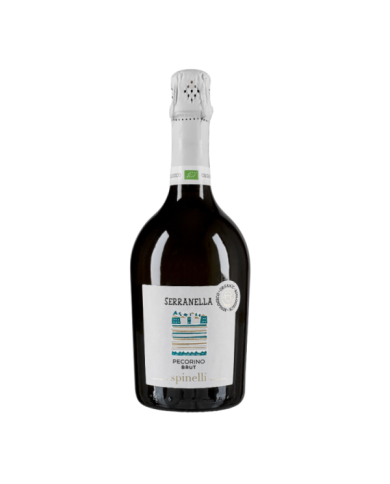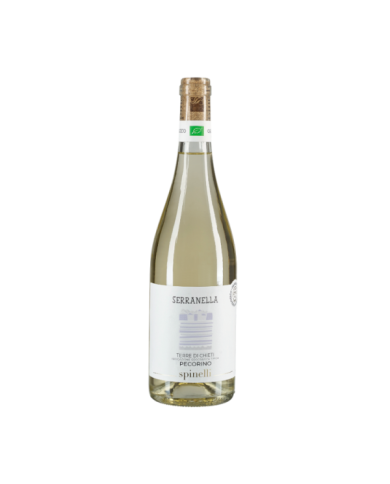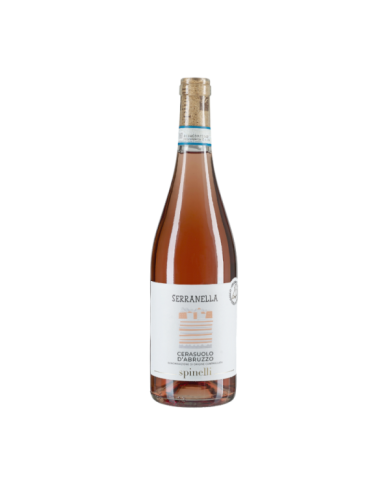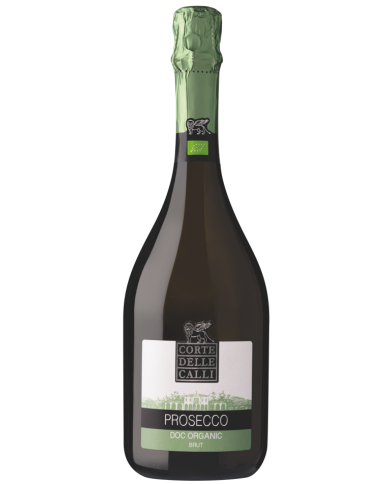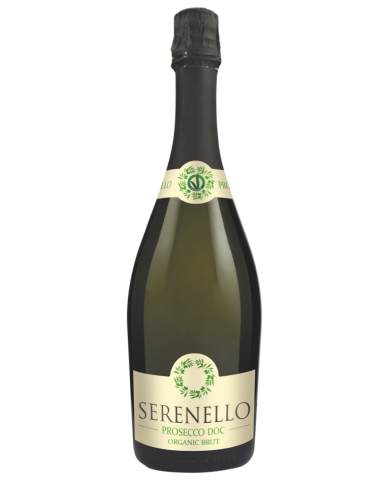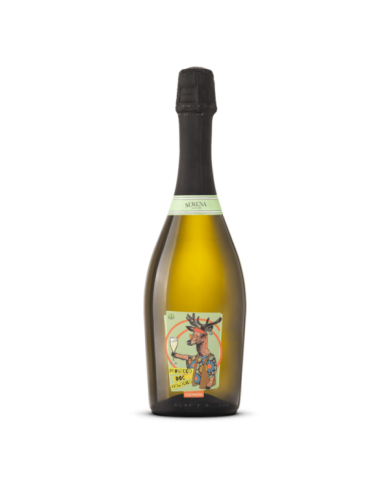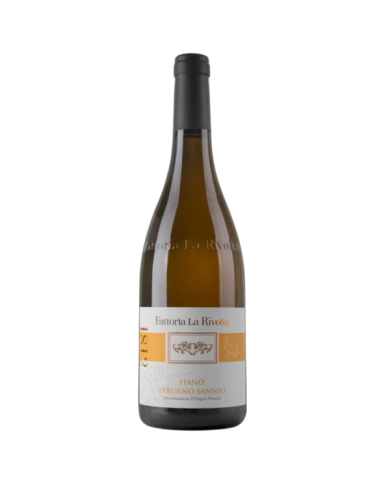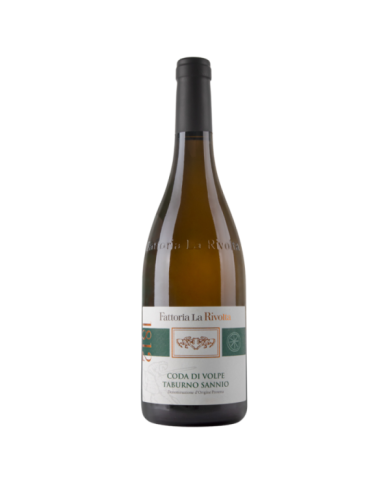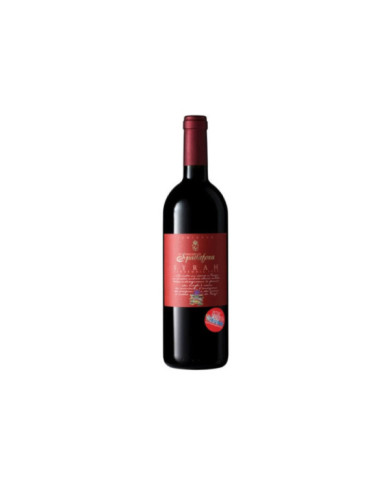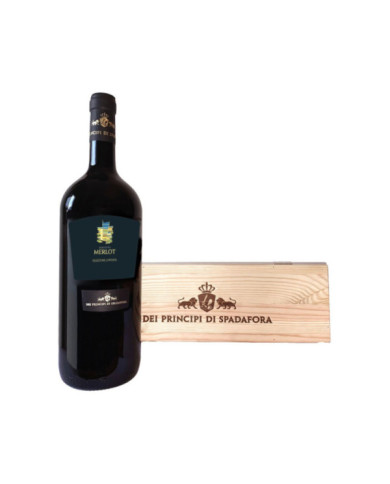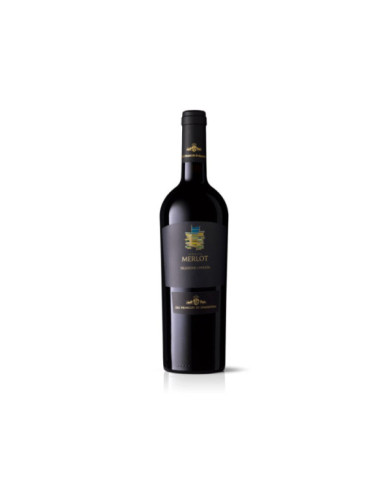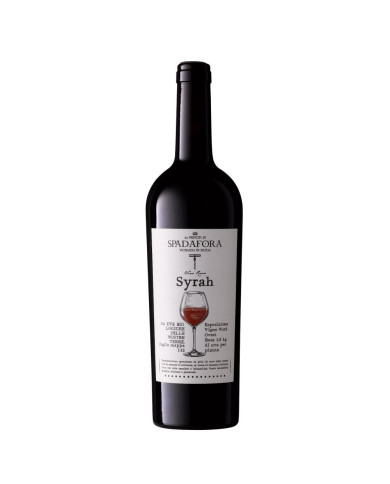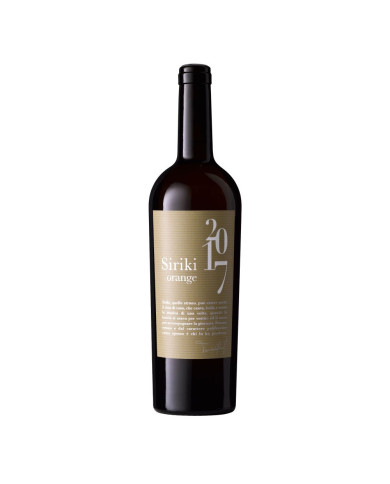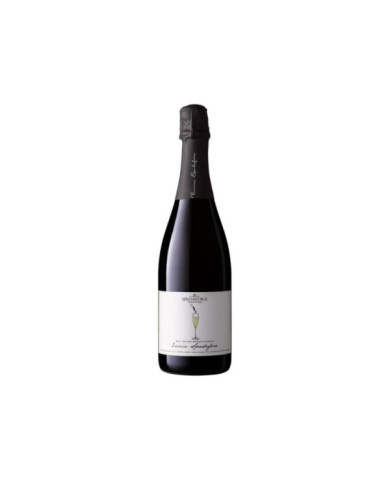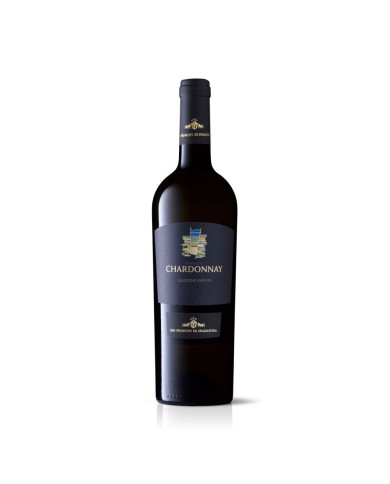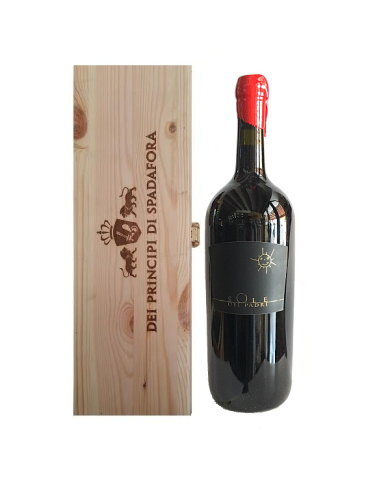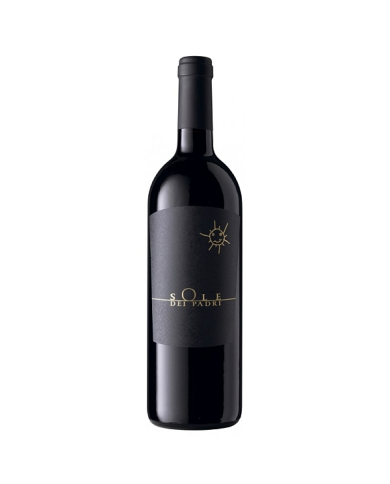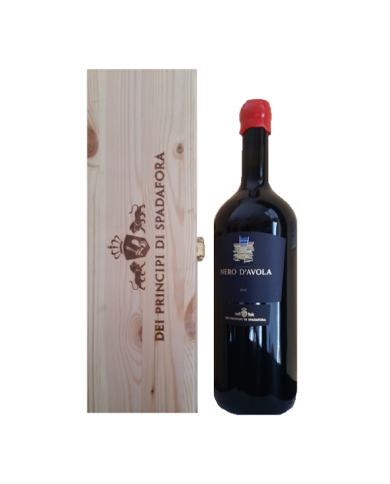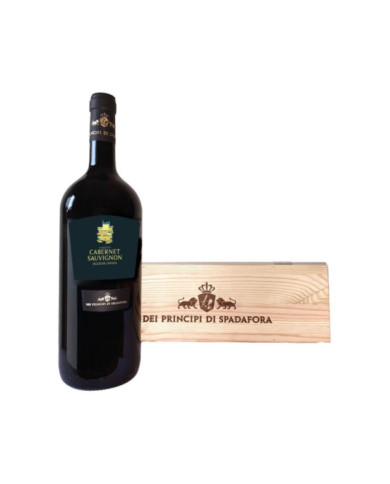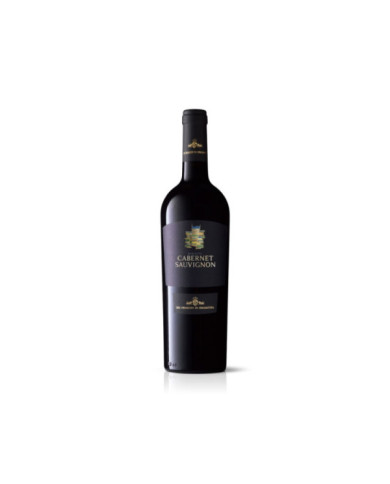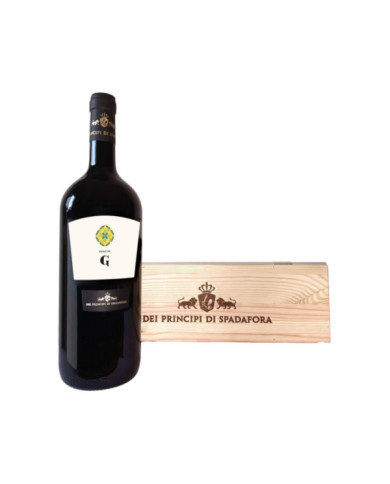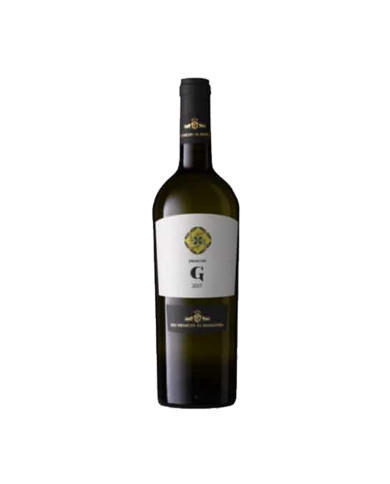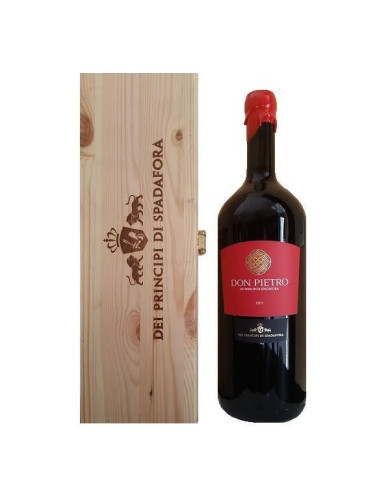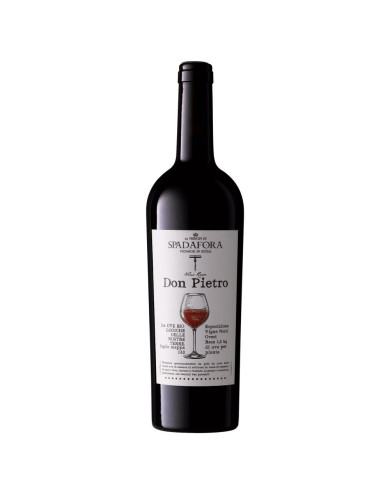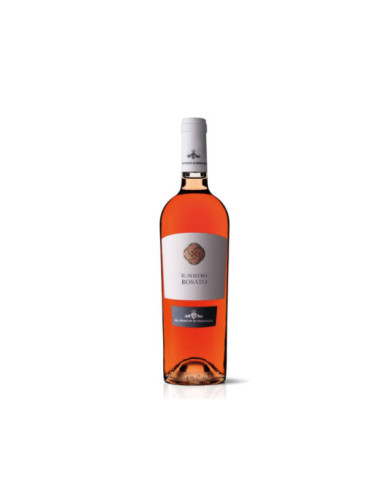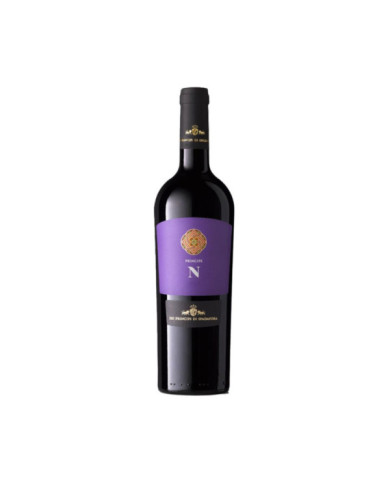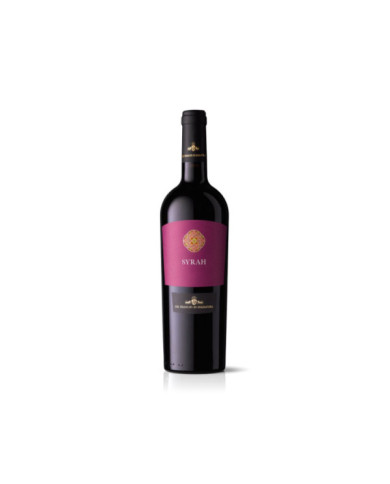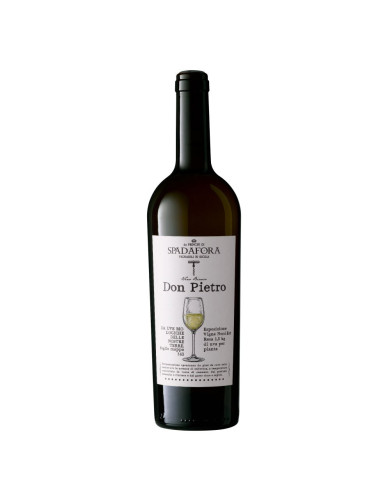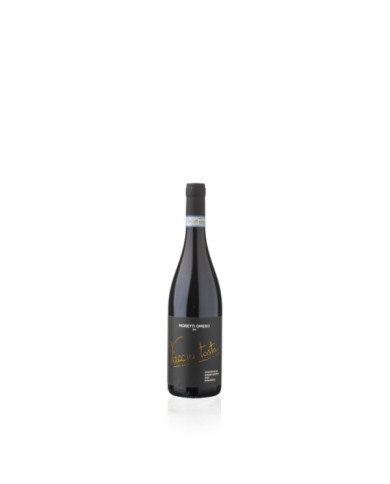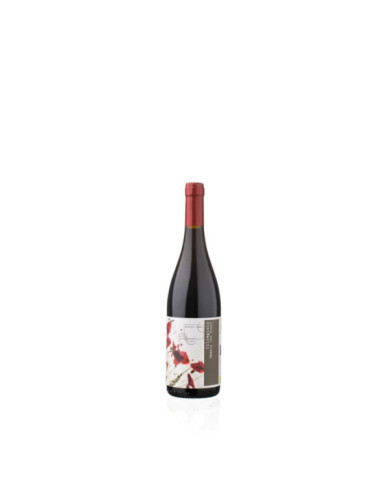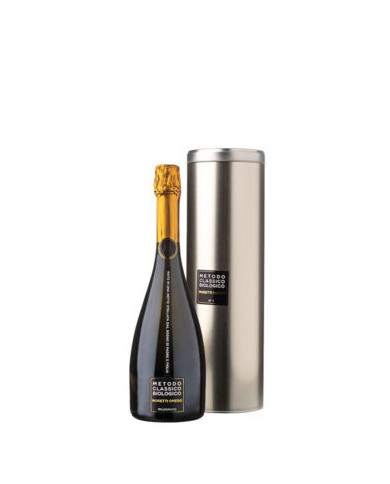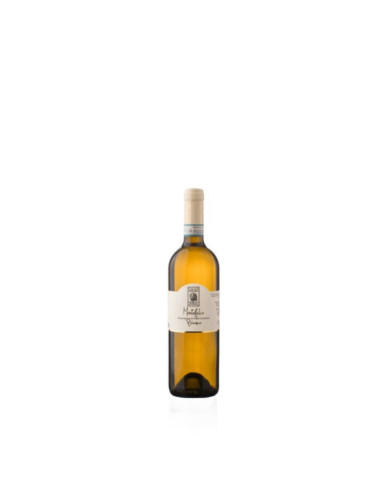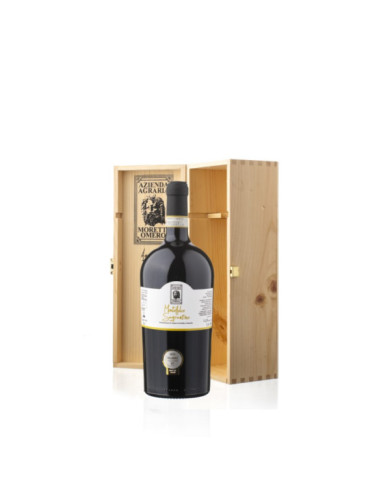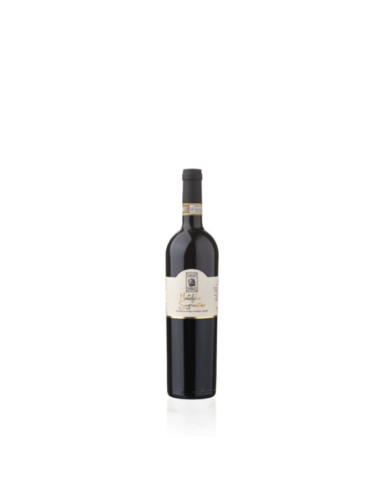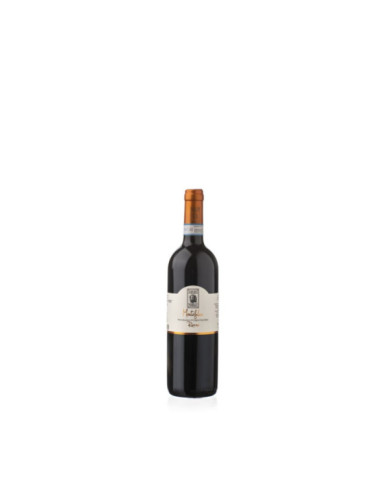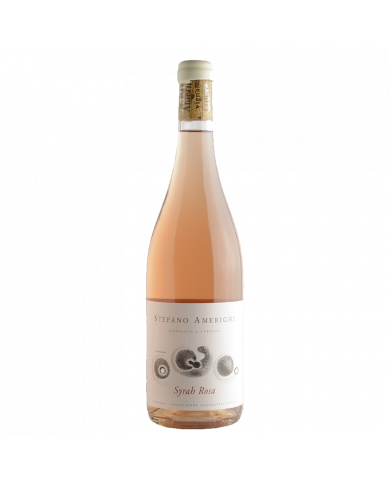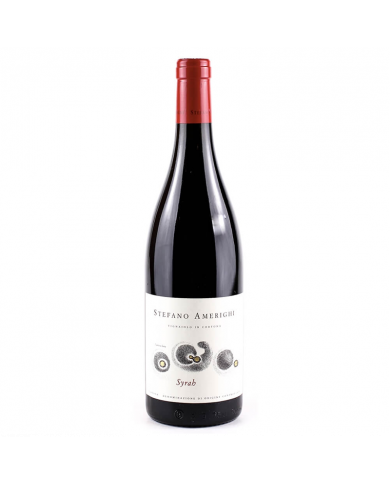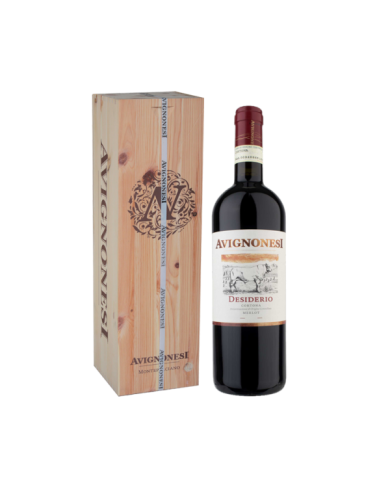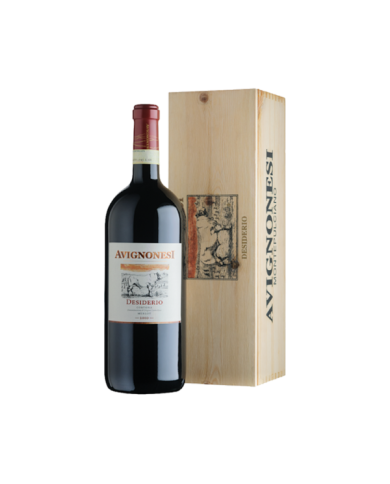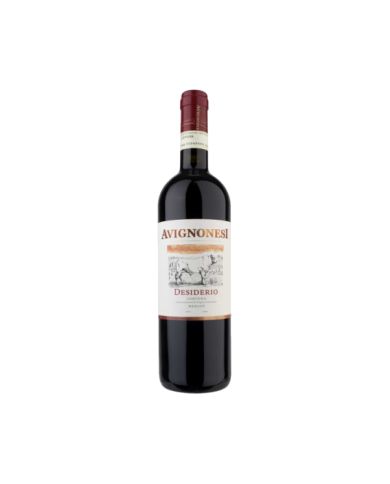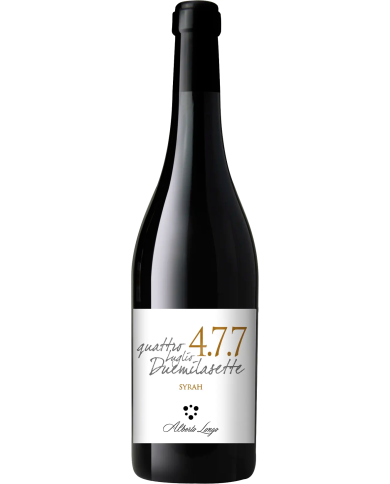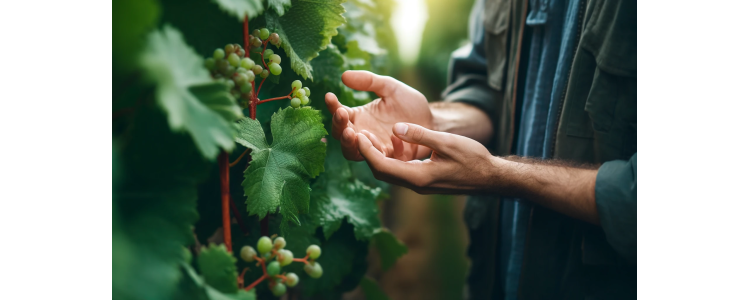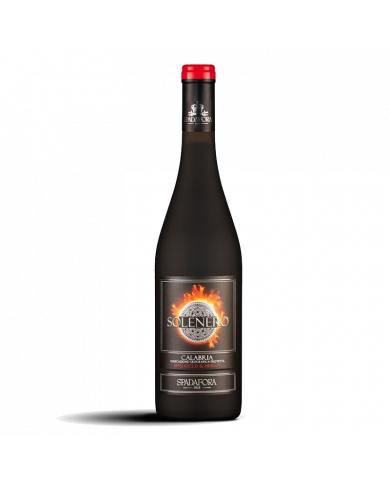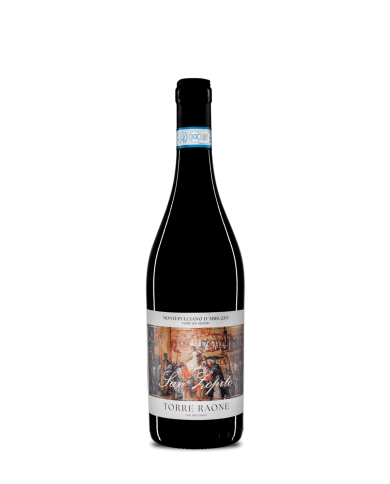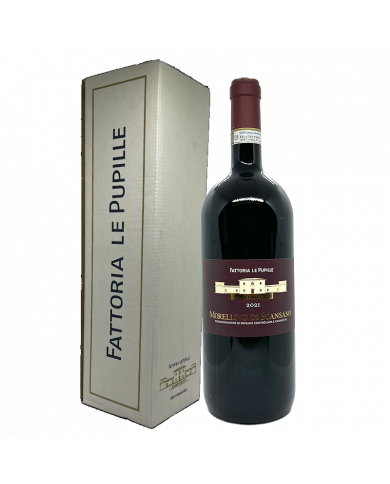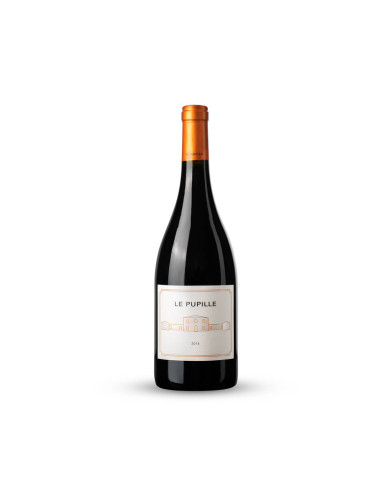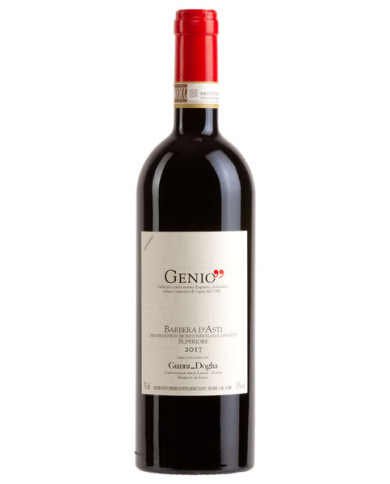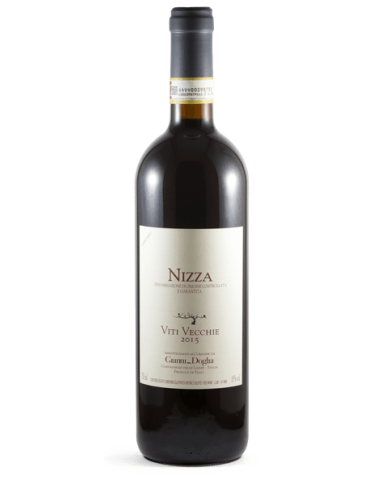Intense garnet red color with orange reflections. The nose is broad with delicate notes of violet and dog rose, hay and licorice in the background. On the palate the tannin is structured but delicate, tending towards sweet. The intensity of the drink is characterized by the juicy fruit that imprints the memory of the wine.
Intense, lively and brilliant garnet red colour. The nose is ethereal with the typical perceptions of violet, then cherry and spices and leather. In the mouth the embrace is full and warm, the tannic, velvety and enveloping texture is balanced by the right acidity.
Intense, lively and brilliant garnet red colour. The nose is ethereal with the typical perceptions of violet, then cherry and spices and leather. In the mouth the embrace is full and warm, the tannic, velvety and enveloping texture is balanced by the right acidity.
Garnet red color with orange edge. Pungent sensations of black pepper, leather and cinnamon emerge on the nose, other more delicate ones of violet and Spanish cherries. In the mouth it is rightly tannic and moderately austere. The correspondence with the olfactory sensations is marked and emerges with the phases of the tasting.
Garnet red color with orange edge. Pungent sensations of black pepper, leather and cinnamon emerge on the nose, other more delicate ones of violet and Spanish cherries. In the mouth it is rightly tannic and moderately austere. The correspondence with the olfactory sensations is marked and emerges with the phases of the tasting.
On the nose the wine is ethereal and floral with the sweet notes of violet typical of the vine; red fruit, plum and spices in the background. The mouth is pleasantly fresh and balanced and the soft and enveloping tannins make it an elegant but not too austere drinkable wine.
On the nose the wine is ethereal and floral with the sweet notes of violet typical of the vine; red fruit, plum and spices in the background. The mouth is pleasantly fresh and balanced and the soft and enveloping tannins make it an elegant but not too austere drinkable wine.
Intense purplish ruby red color with violet reflections. Intense nose of red fruits (raspberry and black cherry) and fine spices. In the mouth the marked but sweet acidity makes it round and full; in closing notes of toasted hazelnut.
Intense purplish ruby red color with violet reflections. Intense nose of red fruits (raspberry and black cherry) and fine spices. In the mouth the marked but sweet acidity makes it round and full; in closing notes of toasted hazelnut.
Intense purplish ruby red color with violet reflections. Intense nose of red fruits (raspberry and black cherry) and fine spices. In the mouth the marked but sweet acidity makes it round and full; in closing notes of toasted hazelnut.
Deep straw yellow colour. The nose shows notes of exotic fruit and banana, linked by a pleasant buttery envelopment. In the mouth it is the harmony of the elements that dominates, where the accord between almond, white flowers and honey give an incredible persistence.
Deep straw yellow colour. The nose shows notes of exotic fruit and banana, linked by a pleasant buttery envelopment. In the mouth it is the harmony of the elements that dominates, where the accord between almond, white flowers and honey give an incredible persistence.
Medium intensity garnet red colour. The nose is delicate and floral, heterogeneous and fruity. The tannic texture of the mouth is soft, supported by the acidic notes of berries. Agile but complex drink.
Intense and vibrant ruby red colour. The fresh, floral and fruity nose is the prelude to the smooth and pleasantly velvety drink, juicy closure. Multifaceted wine.
The color is bright ruby red with violet reflections typical of the vine. Notes of geranium and fresh fruit emerge on the nose. The mouth is dry, bitter, warm. The split red fruit mixes with the tannins perceptible from the almond finish.
It has a pink color with shades that tend to amber, red reflections. The nose highlights the dog rose and hints of grapefruit. In the mouth it is fresh, straight, pleasant and with a good minerality.
It is straw yellow with slight greenish reflections. Nose with a vast varietal spectrum, the hints of pineapple blend with the more delicate ones of jasmine, to close with the more acidic notes of grapefruit. The mouth is full and robust, almost oily. Persistent finish.
Straw yellow of medium intensity. There is a clear contrast between the nose, characterized by the sweet notes of ripe pear and the citrus notes of blood orange, and the mouth, where the sapidity and minerality make it complex and sweetish.
Intense, lively and brilliant garnet red colour. The nose is ethereal with the typical perceptions of violet, then cherry and spices and leather. In the mouth the embrace is full and warm, the tannic, velvety and enveloping texture is balanced by the right acidity.
Intense ruby red with purple hues. The nose reveals intriguing varietal aromas of small black fruits, violets, licorice, vanilla and cocoa. In the mouth it is fresh and has an excellent structure with soft tannins and long persistence. Food pairings: cured meats, first courses of land, roast meats, game, aged cheeses.
Born from clean and sustainable agriculture, respecting a landscape designed by culture and tradition, since 2010 the wines of L'Astore are certified "produced from organic grapes". Symbol of the Salento area in its rosÃĐ vocation and in the old Alberelli di Negroamaro and Primitivo; the production enhances the ancient native vines such as Negroamaro, Malvasia Nera, Malvasia Bianca Antica, Susumaniello and Primitivo.
Trebbiano Spoletino is a typical variety of the territory that extends between Montefalco, Trevi and Spoleto; perhaps the name derives from âTrebiumâ, Trevi in Latin.
A second fermentation in the bottle for our first ancestral one, however linked to the deeply rooted regional tradition of "mosso" wine. We like to call it a classic method âĶ halfway..
Our most important red, from the best vineyard of the Petrignone farm, dedicated to mother Thea: when she died, it was 1989, we were little more than kids, we decided to continue her passion, and, if one day we produced a wine very good, to dedicate it to her. It took ten years, but we were happy, in 1999, to present Thea 1997. Dedicated to you, mom.
Historic vine and our workhorse. Strong and gentle in character and softness (as it is also said of the people of Abruzzo). Obtained from native grapes and selected in the harvest. Plant in rows 1/2 height exposed to solagna on calcareous-clayey soil. Appearance of cardinal red color with purplish reflections tending to blue. Excellent and well structured. Fruity and spicy bouquet, intense flavor and good body. Ideal with grilled red meats and more, salami and aged cheeses.
Obtained from native grapes and selected in the harvest. Appearance of straw yellow color with greenish reflections. On the nose it is fresh and floral with notes of white berry flowers and balsamic notes on the aftertaste. Ideal with all seafood cuisine, it also goes well with appetizers and delicate main courses.
Vine rediscovered a few years ago, widespread throughout the Abruzzo region. The name "pecorino" is given by the sheep's face shape of the bunch and by the fact that when the shepherds passed through during the transhumance, the sheep stopped to graze the leaves of this vine. Cantina Wilma obtains its wine from the "Pecorino" vine with low-row plantings on sandy calcareous soil. Appearance of yellow color, excellent fruity bouquet. The flavor is harmonious and of good quality. Ideal with all seafood cuisine, it also goes well with appetizers and delicate main courses.
Message in a Bottle now joins our acclaimed wine portfolio. A versatile and highly drinkable Tuscan IGT wine, it goes well with many dishes. With an alcohol content of 13.2% it is aged for 12 months in French oak barrels.
The old vineyards of Inzolia planted by my father more than fifty years ago are an extraordinary legacy on which to build the future of viticulture in Belicello. The original clones, perfectly adapted to the particular conditions of the environment to which they belong, exuberantly express the personality and wine culture of the Menfi area. The soil, mainly calcareous and pebbly, gives the wine an intense and at the same time delicate sapidity, great depth and aromatic breadth.
In Sicily, "coast" is the side of the hills that gently slope down to the sea, covered by vineyards as far as the eye can see that bask in the sun, unkempt by the fresh Mediterranean breezes. These are the places of Grillo, a fascinating native variety that interprets the beauty of the Menfi terroir with great personality. Son of generous lands, Coste al Vento gives us a full and ripe fruit that blends with the brackish notes brought by the sea winds, in a harmonious crescendo made original by maceration on the skins and fermentation with indigenous yeasts.
All the attention that Piccolo Bacco dei Quaroni puts into its wines stands out in the OltrepÃē Pavese Pinot Nero DOC Vigneto La Fiocca, one of the most interesting red wines of the entire denomination.
The members of AGRILOGICA cultivate vineyards, olive groves and vegetable gardens in Sardinia with organic methods, respecting the land and European regulations.
Ormanni's Chianti is presented in the glass bright and crystalline ruby. The nose smells of Tuscany in summer: strawberries, rosemary, burnt earth, strawberry tree, mint. On the palate it relaxes with lots of tasty freshness, integrated tannin and a slightly bitter herbal finish. Very good with Tuscan bread and raw sausage.
One of the historic wines of the company, the wine of Roberto, the hunter, who wanted to vinify together the different grapes that traditionally make up the blend and enrich them with a long aging in wood. From its taste a harmonious red wine was born, full of great personality and character, slightly fruity and pleasantly spicy.
Vino Nobile is the result of a careful selection of the best Sangiovese and Canaiolo Nero grapes from the various company vineyards which are harvested and vinified separately each year and then expertly blended so as to best express all the elegance, complexity and finesse of the Montepulciano terroir.
Denomination: Franciacorta Docg Brut Nature. Grapes: Chardonnay, Pinot Bianco and Pinot Nero. Recommended pairings: Pasta, raw fish and main courses. Alcohol: 12% Vol. Format: 0.75 lt. Service temperature: 4-6° C. Typology: Franciacorta.
Produced from Nero d'Avola grapes with the short Charmat method, Rosso di Nera di Milazzo is a young and fruity sparkling Sicilian wine, whose sweetness blends with the fresh and acidic profile.
Autochthonous vine
biodynamic spontaneous fermentation wine with biodiversity certification
In our cellar, between the MORrone and MAJella mountains MORMAJ is born, a rosÃĐ wine obtained by spontaneous fermentation, not clarified, is aged in steel tanks. Any deposits on the bottom do not constitute a defect in the wine and do not alter its taste.
Straw yellow color with golden notes. Aromas of yellow fruit that blend with floral and balsamic notes. Sapid taste, with good structure and long persistence. Excellent as an aperitif and with appetizers, it is perfect with all fish-based cuisine, especially with shellfish and soups. It also goes well with delicate meat-based dishes and vegetables.
Montepulciano d'Abruzzo Serranella is a label produced with 90% Montepulciano d'Abruzzo and 10% Sangiovese grapes. The vineyards are located in the heart of the province of Chieti, between the Maiella National Park and the Adriatic Sea, in a hilly area, with an average altitude of 230 meters slm , on mainly clayey-limestone soils. After the manual harvest, the bunches are destemmed and softly pressed, followed by maceration on the skins at a controlled temperature, in stainless steel tanks. The color that stands out in the glass is a ruby red with brilliant violet hues. The nose explodes with ample aromas of red fruit and fine spicy notes. It is a wine with a good structure, soft, balanced and with a long persistence. A perfect companion to typical Mediterranean cuisine, it goes very well with first courses with meat sauces and grilled red and white meats. Excellent with various medium-aged cheeses.
Cherry red color with bright violet hues. Intense fruity aromas, delicate floral notes and hints of wild berries and black cherry. With a good structure, it is soft, fresh and balanced. Excellent as an aperitif and perfect with pizza, it is decidedly versatile in combinations at the table. It goes well with both white meats and fish, but it is unsurpassed with fish soup, tripe, fresh cheeses and grilled vegetables.
The Schietto Nero d'Avola IGP Sicilia âDei Principi di Spadaforaâ is a red, still and dry wine, vinified with Nero d'Avola grapes. This wine is vinified in cement vats, aged in large barrels for one year and at least six months in the bottle. Lo Schietto is the closing of the circle, at least for now.
Outspoken Cabernet Sauvignon Sicily IGP Dei Principi di Spadafora. An extraordinary pure Sicilian wine, an organic Cabernet Sauvignon with an intense purple-red color and a rich, intense, fruity aroma. The taste is intense, fruity and clear aroma. full and round, soft and well present tannins.
It is a fresh and elegant wine, with a superior structure to the white Don Pietro, included in the Don Pietro line. 7,000 bottles come out.
Don Pietro is a Sicilian red organic wine, produced with Cabernet Sauvignon, Merlot, Nero d'Avola grapes. The wine shows an intense ruby red color and nuances of garnet red, little transparency.
From 100% Nero d'Avola. Fruity and aromatic rosÃĐ wine, balanced tannins and the right structure. Cellar: Dei Principi di Spadafora.
Still and dry red wine, vinified with 100% Nero d'Avola grapes, with a pleasant scent of wild berries with pleasant vegetal sensations, a long aromatic persistence and soft tannins.
From Catarratto grapes comes a savory, fresh and light white wine, but with character. Its name recalls the Spanish origins of the Spadafora family; it is the most produced wine and is produced with a commitment equal to that which the company puts into the production of more expensive wines. The straw yellow colour, the scent of white fruit, the savory and fresh taste make it a simple and linear wine, which should be drunk within two years, to be combined with fish first courses and seafood appetizers. It should be served very cool in order to enhance its immediate drinkability.
Red fruit, notes of raspberry and cherry. Subtle tannins, fresh finish. Certified vegan wine. Fermentation in steel with 15 days maceration on the skins.
Vibrant yellow color with incessant and persistent perlage. On the nose bread crust, white peach, almond blossom and hazelnut notes. Great grace and balance on the palate, thanks to a beautiful structure enhanced by a pungent fresh-savory contrast, which returns the fruity finish in the finish. Notes of hazelnut typical of the grape. Truthful, clear and representative of the area.
Organic Millesimato Classic Method â Vibrant yellow color with incessant and persistent perlage. On the nose bread crust, white peach, almond blossom and hazelnut notes. Great grace and balance on the palate, thanks to a beautiful structure enhanced by a pungent fresh-savory contrast, which returns the fruity finish in the finish. Metal case.
Olfactory elegance with hints of yellow pulp fruit, almond flowers. Nice tension towards hazelnut notes. In the mouth breadth and enveloping texture. Long finish that is revived thanks to the acidity of the Spoletino (Trebbiano Spoletino). The grapes are softly pressed, then the must undergoes static clarification. Subsequently it is fermented in steel tanks at a controlled temperature of 20°C. Natural decantation for three months in steel.
Vibrant ruby red. Small red fruits on the nose, including the typical hint of blackberries. Balsamic hints. Elegant and powerful. Persistent finish with returns of berries and spices. Fermentation 15 days. Maceration 20 days on the skins. Contact with fine lees for 6 months. Batonnage.
Vibrant ruby red. Small red fruits on the nose, including the typical hint of blackberries. Balsamic hints. Elegant and powerful. Persistent finish with returns of berries and spices. Fermentation 15 days. Maceration 20 days on the skins. Contact with fine lees for 6 months. Batonnage.
Central core of succulent wild berries, violet flowers. Full-bodied wine with a fine tannic texture. Fruity finish with light spiciness.
Bright coral pink color, the nose is fruity and with hints that recall red fruit, in the mouth it is round, fresh, characterized by a slight spiciness, and persistent in length.
This Syrah is Stefano Amerighi 's representative wine, the result of his work and his idea. A broad idea that goes from the soil to the plant to the balance of nature.
With a warm and sensual character, full of fruity notes and sweet spices, Desiderio 2016 goes perfectly with savory dishes, such as roast lamb, aged cheeses and game. Intense ruby red in color, this wine reveals an inviting bouquet of black cherries and blackberries with notes of eucalyptus and fresh mint, underlined by elegant sensors of roses and sandalwood. Well structured and very persistent, in the mouth it is enveloping and caressing, characterized by fruity notes and fine-grained tannins.
With a warm and sensual character, full of fruity notes and sweet spices, Desiderio 2016 goes perfectly with savory dishes, such as roast lamb, aged cheeses and game. Intense ruby red in color, this wine reveals an inviting bouquet of black cherries and blackberries with notes of eucalyptus and fresh mint, underlined by elegant sensors of roses and sandalwood. Well structured and very persistent, in the mouth it is enveloping and caressing, characterized by fruity notes and fine-grained tannins.
Intense ruby red to the eye. Elegant on the nose, it initially gives fruity hints of blackberries, morello cherries and raspberries, followed by flavors of aromatic herbs, licorice, chocolate and coffee beans. Precious shades of goudron and cedar wood complete the olfactory picture. The palate is refined and important, well developed in the tannic texture, with a good structure and long persistence. Requires to be combined with meat preparations. Excellent to accompany stewed kid.
In Avignonesi , the pursuit of excellence goes hand in hand with the experimentation of 100% Tuscan winemaking processes, with the intention of allowing the habitat to prevail over external influences. For this particular organic wine, Avignonesi has set aside steel and oak in favor of Tuscan clay. The name Da-Di , the Chinese term for " earth-soil ", was chosen to underline this peculiarity.
Intense and enveloping wine, with notes of red berries and spicy aromas.
Sale of Organic Wines: everything you need to know
Organic wines represent a sustainable and natural choice for consumers who want to buy quality products. In this article, we'll reveal everything you need to know about selling organic wines, from product characteristics to online purchase methods.
What is an organic wine
An organic wine is a product that is produced according to the organic cultivation method. This means that the grapes used for the production of wine are grown without the use of pesticides, chemical fertilizers and other chemical products harmful to the environment. Furthermore, during the production of organic wine, no artificial preservatives or additives are used.
The characteristics of organic wines
Organic wines are distinguished by their quality and their unique taste. Being produced with naturally grown grapes, organic wines have a more authentic and genuine taste than conventional wines. Additionally, organic wines are generally lighter and more delicate on the palate, with balanced acidity and a fruity aroma.
The sale of organic wines online
Selling organic wines online is one of the most comfortable and convenient ways to buy this quality product. Thanks to the spread of e-commerce and the growth in demand for organic products, there are more and more online wine shops offering high quality organic wines.
To buy organic wines online, it is important to choose a reliable and professional seller who offers a wide choice of quality products. Furthermore, it is advisable to read the reviews of other customers to get an idea of the quality of the service and the products offered.
The advantages of organic wines
Organic wines represent a sustainable and environmentally friendly choice. The cultivation of grapes according to the organic method reduces the impact on the ecosystem and preserves biodiversity. Additionally, organic wines are free from harmful chemicals, making them healthier and safer for consumption.
How to choose the right organic wine
When choosing an organic wine, it is important to take into account the characteristics of the product and your personal preferences. It is advisable to read the labels of organic wines to learn about the grape varieties used, the place of production and the cultivation method. In addition, you can consult the reviews
The organic certification of wines
To ensure the quality and sustainability of organic wines, an official certification is required. In Italy, the certification of organic wines is managed by the Ministry of Agricultural, Food and Forestry Policies (MIPAAF), which issues the "Organic Agriculture" quality mark.
To obtain organic certification, wine producers must follow rigorous cultivation and production criteria, which include the use of sustainable and environmentally friendly agricultural practices. Furthermore, organic wines must comply with certain sulfur limits and cannot contain artificial additives or preservatives.
The types of organic wines
There are different types of organic wines, which differ in the type of grape used and the production method. Some of the most common grape varieties for organic wines are Sangiovese, Chianti, Pinot Noir, Merlot, and Cabernet Sauvignon.
In addition, there are also organic wines with no added sulphites, which are free from chemicals and offer an even more authentic and natural tasting experience. These wines are particularly suitable for people suffering from food allergies or intolerances.
Tips for tasting organic wines
To fully appreciate the quality of organic wines, it is important to taste them correctly. Here are some tips for tasting organic wines:
- Use a clear crystal glass, which allows you to evaluate the color and texture of the wine;
- Observe the wine in the light to evaluate the transparency and intensity of the color;
- Smell the wine to grasp its aromas and perfumes;
- Taste the wine, swirling it in your mouth to appreciate its taste and structure;
- Pairing organic wine with organic foods, to enhance their natural characteristics.
To conclude, buying organic wines online can offer many advantages, including greater convenience, a vast choice of products and greater transparency on the quality and origin of the wines. However, it is important to choose a reliable and professional e-commerce that offers guarantees of safety and quality on the products offered.
Finally, it is important to remember that the choice of organic wines is not just a matter of taste, but also of social and ecological responsibility. Choosing to buy organic wines means supporting sustainable agricultural practices, respecting the environment and contributing to the protection of our planet. In this way, every consumer can become an active actor of change, promoting a healthier and more sustainable lifestyle for everyone.

